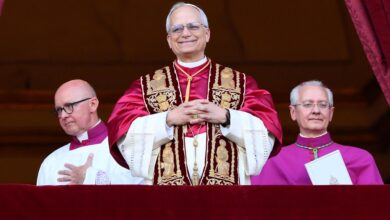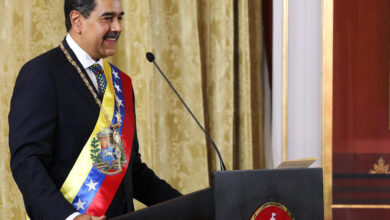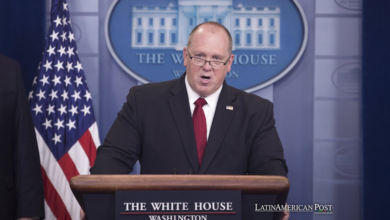Pedro Castillo has not completed a year in government and seems to have no control. The voices calling for his resignation are increasing in Peru.

Photo: TW-PedroCastilloTe
LatinAmerican Post | Santiago Gómez Hernández
Escucha este artículo
Leer en español: Con Pedro Castillo y Congreso de enemigos, crisis en Perú se agudiza
It seems far away that July 28, 2021, when Pedro Castillo surprisingly came to power. The humble but controversial professor from Puña managed to prevail in the second round against the powerful Keiko Fujimori. But his presidency has been anything but quiet. Now it faces a crisis due to the protests of civil sectors that have generated a rise in food and that puts at risk the feeding of a large part of the population that lives in extreme poverty.
With a fragmented Congress, where the opposition has the majority and has already tried to remove him from office on 2 occasions, Pedro Castillo tries to maneuver. Adding to this is the little stability that he has managed to achieve within his government. So far in his term, he has suffered the resignation of several members of his cabinet or, as in the case of Hernán Condori, minister of health, who was removed by Congress just a week ago.
The current carrier crisis began with the rise in gasoline prices. To this, other groups from economic sectors were added, such as farmers. They have developed a series of blockades that have put Pedro Castillo and the Government in trouble. Despite being a president who was elected under the banners of social struggles and trade unions and leftist movements, his response to this crisis has not been very distant from that of right-wing governments. In the first measure, he ordered a general curfew and a state of emergency in the capital, Lima, and in the neighboring municipality of Callao.
According to the president, this measure was taken "to protect the fundamental rights of all people, which will not prevent the supply of essential services." However, he later had to reverse his decision in the face of increased criticism from even sectors close to the president.
This fight between the opposition and the government is a clear sign that the interests of each of the parties have not provided the necessary solutions for Peruvians. The fight to remove a president who hasn't even been a year and Castillo's inability to find intermediate points to work and give some peace of mind to the people is proof that the political crisis in Peru does not seem to have an end in sight.
This was again demonstrated in the most recent meeting that the executive had with the legislature to try to find solutions to the demands of the protesters.
For now, the voices calling for the president's resignation are getting louder. As a committee of the Peruvian Congress and President Pedro Castillo met, several protesters, called for Castillo's job.
Congress has indeed shown little interest in helping a Castillo without the necessary support (neither in Congress nor in the people), but Castillo himself has not been able to adequately maneuver his presidency either. With an initially controversial cabinet and unpopular decisions such as the curfew, he is in a rather precarious position.
It is even possible that members of the government coalition parties consider leaving this and leaving Castillo more and more alone and facing a latent risk of impeachment. Sigrid Bazan herself, from the Together for Peru party, made clear on her Twitter account her dissatisfaction with the measures taken by the president.
Señor presidente, siendo prácticamente la media noche, no hace sentido una medida inacatable, que no responde solución alguna y que más bien va a afectar a todos los trabajadores que en breve madrugarán para sus actividades diarias. Soluciones de fondo y no anuncios de madrugada.
— Sigrid Bazán (@sigridbazan) April 5, 2022
It is time for the Peruvian president to start making the right decisions and for the opposition to understand that the departure of one more president (Peru has had presidents in less than 5 years) will not solve the crisis either and will not provide answers to citizens. This may even put institutions at risk and undermine the already battered confidence that Peruvians have in their government.




